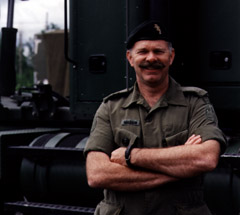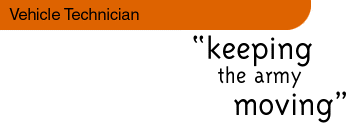 |
Barry, 45, works for the Light Utility Vehicle Program (LUV),
a five-year project to replace the Canadian military's fleet of
2,300 jeeps. He deals with everything from writing technical specs
and lifecycle costing, to operator training and vehicle testing.
Projects like the LUV, which is run out of an office in Hull,
Quebec, generally take about five years. "It's a long process,"
Barry explains, "because after inception, when a requirement is
identified, you go through the army staff - what they're looking
for, the role it's going to play, and the type of missions it's
going to be used for." Then, various civilian and military boards
have to give their approval.
Once precise
needs and finances have been sorted out, Barry's group is given
the statement of requirements so that they can write the technical
specs. Barry has to ensure that the vehicle requirements are realistic
and achievable. "If we think something is not attainable we go
back to them and say 'this is not practical.' We can't make a
vehicle that will walk on water. We can't do stuff that is beyond
the capability of the industry."
Writing spec
sheets is a comprehensive task - the average document runs about
70 pages and is extremely detailed. "I did a detailed study of
load planning," Barry explains.
"Let's say
we need to know what we can expect of a vehicle carrying a crew
of three and their kits. I have to sit down and work out a load
table that includes the weight of a little tube of Chapstick -
that's part of the kit."
Once the top
three choices have been identified, Barry and his crew spend months
testing the vehicles. "We'll do a user trial and an engineering
configuration trial. We want to put some mileage on it - like
72,000 kilometres. We put all kinds of sensors on it. What we're
basically testing is mean-time failure rates compared to what
the manufacturers have told us."
|
 |


